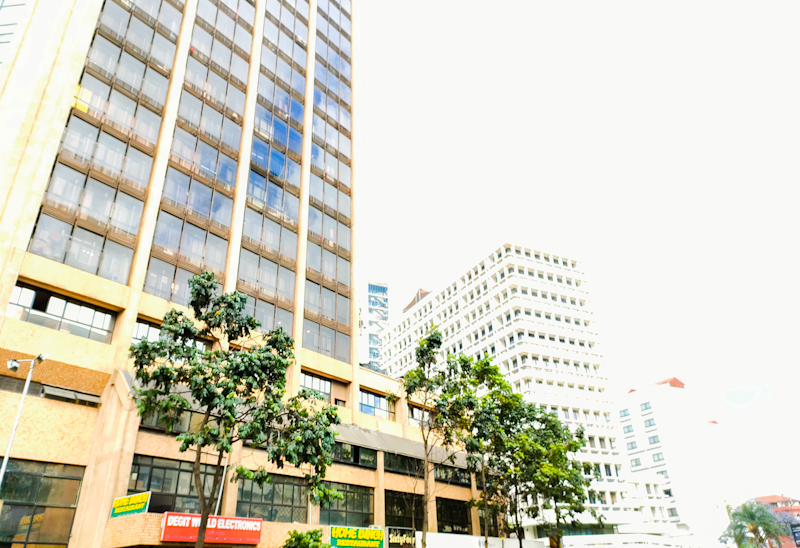 Across the globe, infrastructure plays a crucial role in all the dimensions of sustainable development – the economy, environment, and society. From transport, water and sanitation networks to power-generation facilities, it keeps the wheels of the economy and society turning.
Across the globe, infrastructure plays a crucial role in all the dimensions of sustainable development – the economy, environment, and society. From transport, water and sanitation networks to power-generation facilities, it keeps the wheels of the economy and society turning.
The world thrives on infrastructure, which means it plays an integral part in meeting the Sustainable Development Goals (SDGs). Consisting of everything from equality in education, universal health coverage, and access to energy, clean water, and sanitation, most SDGs require infrastructure improvements.
The SDGs have placed special focus on this area. As per SDG 9, by 2030, the world has to achieve universal access to reliable and sustainable infrastructure that will result in equitable and prosperous societies. This is why infrastructure is becoming more widely recognized today than before.
However, there is a lot at stake in implementing sustainable infrastructure projects; therefore, the government and stakeholders need to approach them with a sound strategy. Infrastructure should not be viewed as individual assets but as a part of an interconnected system with a portfolio of other assets that cumulatively hold great potential to achieve the SDGs’ three pillars: economic, environmental, and social sustainability.
What is Sustainable Infrastructure Development?
Sustainable infrastructure development refers to the efforts of governments, businesses and citizens to ensure the long-term economic viability of existing infrastructure while also advancing new technologies to ensure its resilience and sustainability. It is an ongoing process involving different stakeholders, such as governments, private businesses, and individuals.
Legal Framework for Sustainable Infrastructural Development
The majority of the sustainable infrastructure projects are implemented in the context of a legal framework for sustainable development. It can be defined as the set of laws, rules and regulations that govern how a nation addresses its sustainable development issues.
Thus, it is a set of policies and laws to ensure sustainable development. The goal of achieving sustainability is to increase all people’s social and economic well-being, particularly the most disadvantaged.
The United Nations has defined the concept of sustainable development as a process of sustained growth and development that meets the needs of the present without compromising the ability of future generations to meet their own needs.
It means sustainable economic growth, natural resources, production and consumption patterns, and social inclusion.
Socio-economic Conditions for Sustainable Infrastructural Development
A sustainable project should result in a positive socio-economic impact and not just an increase in living standards for the people who reside in those communities. For the economy, sustainable infrastructure dividends should range from the jobs created during construction and maintenance to their ability to generate economic activity.
By interconnecting communities, cities, education, and employment, infrastructure such as transportation and telecommunications underpins national economic goals.
Regarding the environment, infrastructure should be a critical component in conserving natural resources and reducing the impact of climate change. All efforts should converge are ensuring the production of clean energy, which is essential in reducing dependence on fossil fuels. This will also contribute to reducing pollution and the generation of greenhouse gases.
Consequently, when equitable access is assured, infrastructure will remain beneficial to society since it delivers the services essential for sustainable development, including power supplies, healthcare services, and sewerage networks.
Whether by providing the public transport that makes it easier for farmers in rural areas to transport their produce to the market, helping mothers get easy access to healthcare facilities, communities get clean water and sanitation, infrastructure can positively impact society.
But despite these essential roles, enhancing resilience across all these pillars is crucial. The infrastructure must be resilient to future shocks and stresses; this way, it can contribute to sustainable development and overall societal resilience. However, achieving this resilience requires the implementation of reliable strategies that are viable.
Strategies to Achieve Sustainable Infrastructure Development Goals
Achieving sustainable infrastructure development calls for concerted efforts from all stakeholders – including the private sector, individuals, and institutional levels. Although donor countries have made significant contributions to realizing high-quality infrastructures, their actions are not creating the large-scale changes ideal for the increasing demands of populations in emerging economies.
Therefore, the focus must shift from just the project preparation levels to institutional stakeholders. These stakeholders have the tools and platforms required to integrate all the elements of sustainability into the infrastructural projects. This covers the planning, procurement, and regulatory design phases of project development.
Economic and Financial Sustainability
The national and sectoral productivity growth strategies must support sustainable and inclusive growth here. They should also provide incentives to guarantee institutional, social, and environmental returns from infrastructure. Equally important is job creation through infrastructural projects.
While at it, taxation should be lenient on sustainability and address challenges such as perverse subsidies and price distortions. Procurement processes should be fair to both the public and the private sectors. Also, the government should establish bold sustainability risk analysis and management in infrastructure investment evaluations, clear standards for sustainable finance, life-cycle costing of infrastructure assets, and transparency in incorporating sustainability n the projects.
Environmental Sustainability
Sustainable infrastructure development must align itself with the strategies and incentives designed to reduce the carbon footprint. The government must lay out plans for climate resilience and adaptation. The procedures should include strategies for disaster risk management and air pollution and should also include ways of enhancing flexibility, durability, and the recovery of the infrastructure systems.
Apart from implementing national and subnational soil and pollution management systems, the government must also develop biodiversity and ecosystem management strategies. This will also guarantee effective management of soil and water.
Social Sustainability
The government should implement community involvement and the establishment of institutional frameworks for fair benefit sharing and compensation to project affected communities. Better yet, the strategies should establish sound standards and capacities to ensure community health, safety, and security.
It is also an excellent recommendation to “demonstrate commitment and capacities to ensure adherence to occupational health, safety, and labour standards as well as standards and capacities for the protection of vulnerable groups”, as the UN suggests. Governments must also uphold institutional commitment and capacities to ensure gender inclusion, adequate community access to resources, the efficient management of cultural resources and heritage, and the engagement of indigenous and traditional peoples.
Conclusion
One of the primary challenges in implementing sustainable infrastructure projects is that they are often highly complex and large-scale endeavours that require a great deal of time and expertise. But sound policies and plans can help scale up sustainable infrastructure development.
Its success can also be enhanced by the rule of law, transparency, and stability over time while engaging the private sector and delivering sustainable infrastructure. All in all, with the right strategies in place and proper planning, any such project can be successfully implemented.
Ms. Cynthia Chepkemoi Lasoi, Project Manager and Sustainability Enthusiast.
Khusoko is now on Telegram. Click here to join our channel and stay updated with the latest East African business news and updates.




